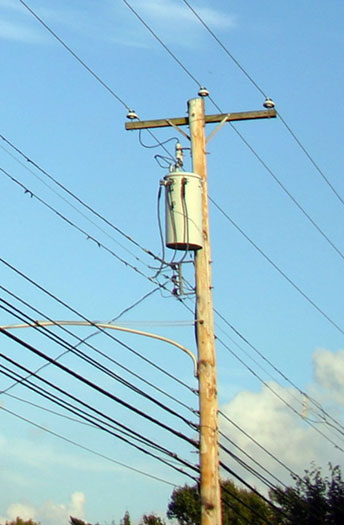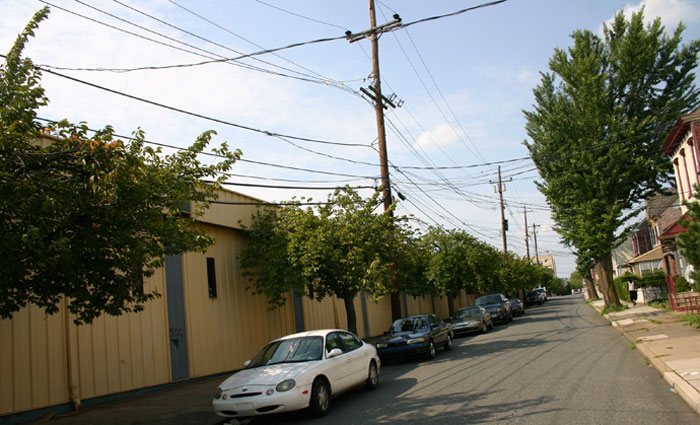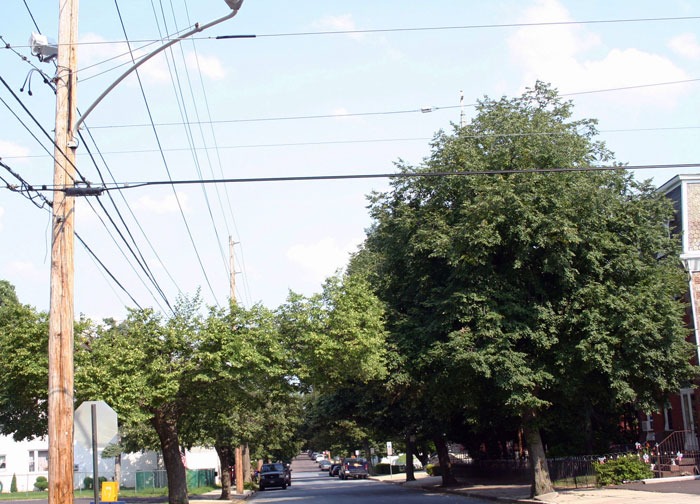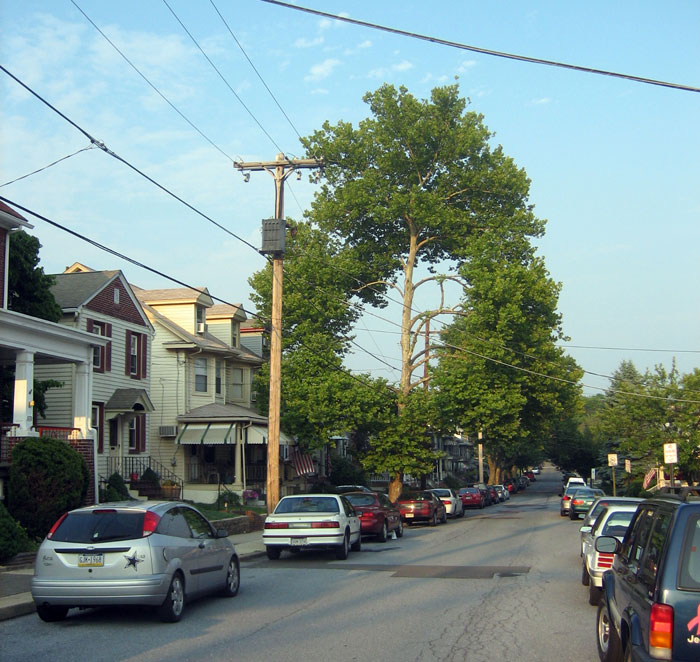
Cross bars ugly and unnecessary
Utility poles usually carry three or four sets of wires. The highest wires are “primary” wires carrying thousands of volts of electricity. Tree limbs must be trimmed to avoid contact with these wires. Below the primary wires are cylindrical “transformers” which reduce the voltage to “secondary” electric wires, below, which provide electric service directly to buildings along the route. PECO will not trim branches for secondary lines, which usually carry 240 volts of electricity, unless they are located under primary wires. Below the electric lines, the two wires closest to the ground provide electric and cable service. These lines rarely need any clearance from tree branches.The worst utility poles are those with crossbars forming a "T". These poles need an enormous amount of clearance. Crossbars are not needed and should be eliminated. There is a better alternative.
Crossbars require hollowed out tree
A plane tree has been hollowed out to provide clearance for widely separated energized wires running from a crossarm perpendicular to the utility poles. Far less clearance would have been needed if PECO had used a tree-friendly “bundled wire” system.


